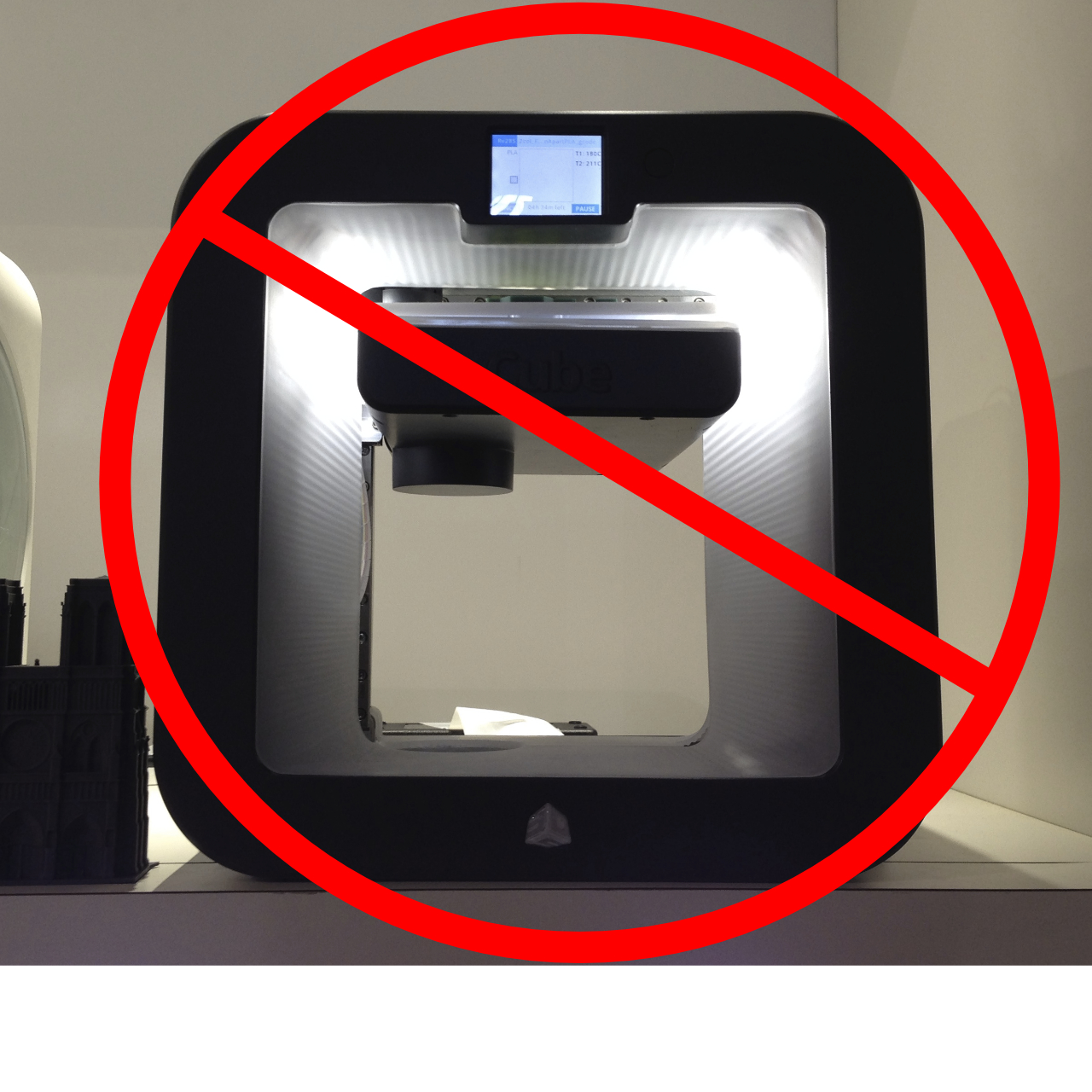
Yesterday 3D Systems announced not only the demise of The Cube, but also their entire consumer brand, Cubify. What are the implications of this?
Cubify was born in 2011 at the South Carolina HQ of 3D Systems in an attempt to capitalize on the then burgeoning consumer 3D printer concept. Back then, it was speculated that improvements in technology would soon enable everyone to own and operate their own 3D printers, much like the way everyone uses 2D paper printers.
3D Systems focused their efforts on the Cubify brand, which included not only several 3D printer models, but also a 3D scanner and an entire ecosystem of 3D content that was intended to encourage more use of The Cube. Content included not only downloadable 3D models, but also 3D model generators of all types, 3D print services, contests, training and events.
3D Systems did their best and spent a lot of money on Cubify along the way. In the end, the results did not meet their expectations.
This move is fundamental in the 3D printing market, and it punctuates an industry trend we’ve observed over the past two years. We believe there are multiple important implications of this development, which we present in no particular order:
Consumer 3D printing: Some may say it’s officially dead as of this announcement, but we think it’s simply delayed. Delayed until others persist and work around the barriers made clear by recent forays into consumer 3D printing. More on this another day.
MakerBot Effects: Educational institutions, which made up a good chunk of Cubify sales, are likely now to turn to MakerBot for equipment. This could result in an upturn in MakerBot sales. Yes, there are other options, but MakerBot is the single provider that has the cash to reach that market in the most dramatic manner. And they’ve clearly stated they’re focusing on that market, too. Good news for MakerBot.
Proprietary Materials: The Cube and its products used a very closed-style system in which not only the materials were technologically controlled via chipped filament cartridges, but the machines themselves had to be “activated” by serial numbers and software keys. With the demise of the Cube, it is possible the proprietary style of equipment will become less attractive to manufacturers.
Stock Market Effects: Anything “consumer” is overly visible in the media, and the 3D Systems announcement will be taken by many investors as a signal that there’s something terribly wrong with 3D printing as a whole – but of course, that’s not true. 3D Systems itself said that the Cubify line represented less than 2% of their revenue.
Cubify Sales: 3D Systems stated in their press release that the discontinuance of the consumer line implies: “revenue to be impacted by less than 2%”. This permits us to estimate Cubify sales in a rough way, as their total revenue from January to September totaled USD$482M, or USD$643M if we extrapolate for the full year. A slim 2% of that is around USD$13M, or around 13,000 units at USD$1,000 each. Over a thousand units per month might be a quite healthy number for a small manufacturer, but for a giant such as 3D Systems, it is far to small to support the huge ecosystem they created. It’s now clear why they shut things down.
Industrial 3D Printing: This area should get a boost for several reasons, not the least of which is that 3D Systems’ entire marketing efforts will now be focused on promoting industrial uses, rather than consumer uses. Also, media covering 3D printing will have fewer consumer-focused to write about, leading them to write more about industrial uses, which, we should say, are growing strongly as manufacturers discover the benefits of 3D printing.
Knowledge Dispersal: With the demise of the Cubify ecosystem, we will most likely find multiple former staff members on the loose looking for new opportunities. Many of them were absorbed by 3D Systems during its growth phase, taking the staff from small and innovative 3D print operations. These folks are (or soon could be) free again, but they’re equipped with much more knowledge about what works and what doesn’t work in consumer 3D printing. Expect some very interesting new ventures to appear by the end of 2016.

